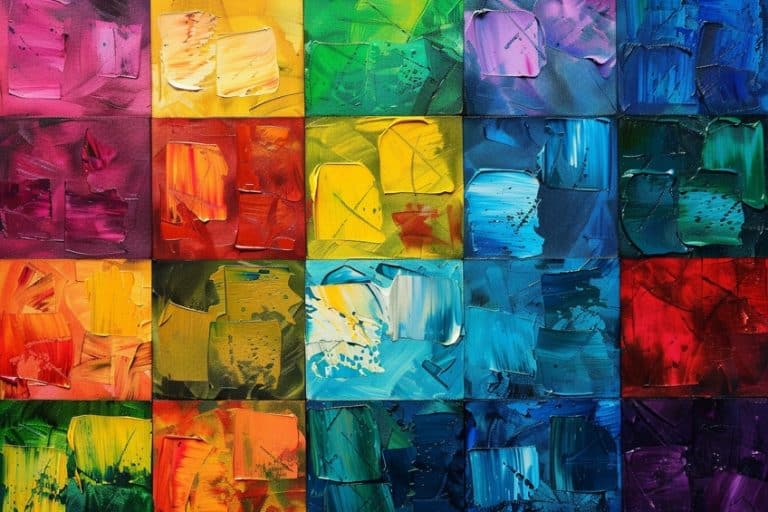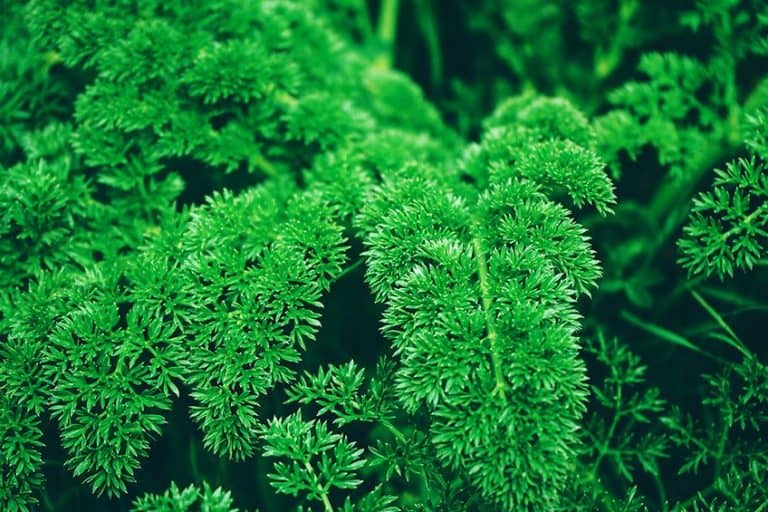Primary Colors – What Are the Primary Colors in Color Theory?
Most of us learned at school what the basic primary colors are, the main colors being red, yellow, and blue. However, over the years, other color models have been discovered and the issue has become a little more complex. So, what are the primary colors and exactly how many primary colors are there?
Table of Contents
What Are Primary Colors?
A primary color definition can be a bit tricky as it is not as simple as what you learned back in school. A basic explanation is that primary colors can be pigments or light, that when combined, create a myriad of other colors. The traditional color theory we all learned when painting, tells us that there are three main colors, red, yellow, and blue. However, when it comes to how many primary colors there are, it is a little more complex than this.
This is because the traditional color theory only involves the use of pigments in paint and does not take into consideration the way light blends color. So, there are other color models you should consider. These involve the RGB color model, which has red, green, and blue as your primary colors, and is used with things like television screens and computer images. The other is the CMYK model which includes cyan, magenta, yellow, as well as black, and is mainly utilized for printing.
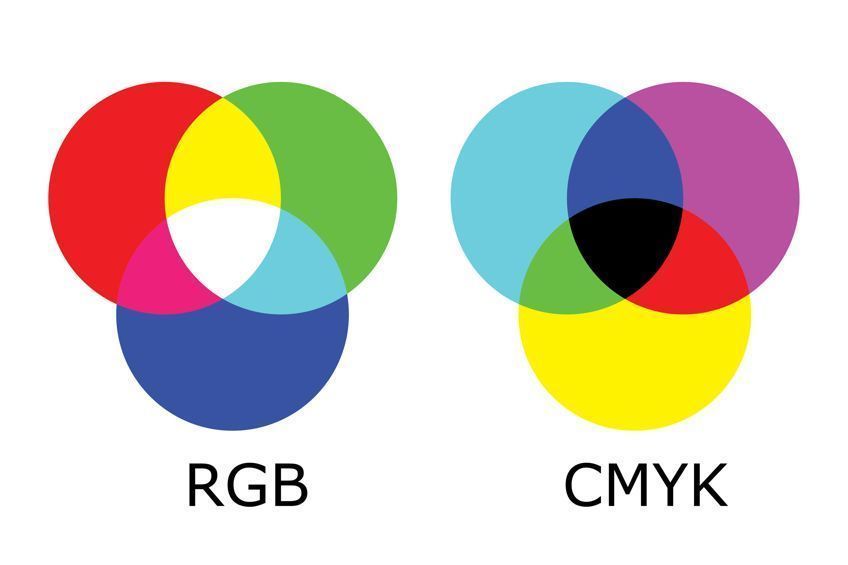
As you can see a primary color definition is more than meets the eye. Speaking of, the eye is an amazing organ, and how it perceives color is due to where the color comes from. Some colors are sent directly to the eyes, while others reach the eyes through a reflection. When it comes to light and the RGB model, and how we see color, it involves color receptors in the retina, which are known as cone cells, and these are responsible for color vision and sensitivity.
We have three types of cones, mainly green, red, and blue. This means we have trichromatic color vision. So, therein lies the major difference between the primary colors. Everything is about how colors enter the eye. There are two principal types of color mixing models called additive and subtractive colors.
Additive Colors
Additive colors were originally discovered by Sir Isaac Newton when he was experimenting using a prism and mirrors. He used the prism to refract white light, which split into different colors and when recombined, they formed white light. This was then used to develop the first visual representation of colors known as the color wheel. The experiments led to the theory that red, green, and blue are the primary colors that all other colors come from.
So, these colors are said to be the primary colors for the additive color model and are what happens when you look at a computer screen or television.
For example, if you combine green and blue light, you should come up with a cyan color. However, it might be more complicated than this, and some say that the yellow-green section of the spectrum responds better than the red when it comes to how the receptors in the eye respond. So, the range of colors can depend on the three additive primary colors, which could vary. However, we will remain with the traditional RGB primary colors, just to keep it simple.
Subtractive Colors
This color model is achieved when you are blending inks or paint pigments. These colors can be seen because they are reflected by the light that lands on them. For example, if you add yellow ink to a white piece of paper, the ink will absorb all the blue color wavelengths and leave the others, which you then observe as yellow. So, you begin with white and then subtract light at various wavelengths as the primary colors are added. The color gets darker as more colors are added, as light is reduced. This is different when compared to additive colors, which become brighter.
| Shade | Hex Code | CMYK Color Code (%) | RGB Color Code | Color |
| Red | #ff0000 | 0, 100, 100, 0 | 255, 0, 0 | |
| Yellow | #ffff00 | 0, 0, 100, 0 | 255, 255, 0 | |
| Blue | #0000ff | 100, 100, 0, 0 | 0, 0, 255 |
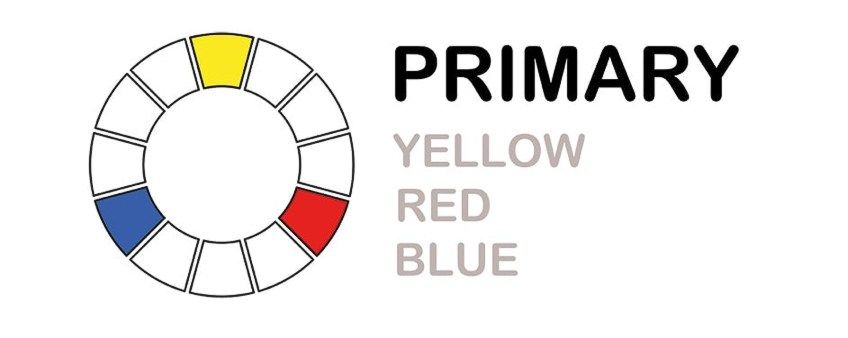
The main colors for paint pigments are red, yellow, and blue, and cannot be created by mixing other pigments. You also have subtractive primary colors for ink, which is used extensively in the printing industry. In this case, the primary colors used are cyan, magenta, yellow, and also the addition of black. You will notice that cyan and magenta are not the same as blue and red, some people use these synonymously.
| Shade | Hex Code | CMYK Color Code (%) | RGB Color Code | Color |
| Cyan | #00ffff | 100, 0, 0, 0 | 0, 255, 255 | |
| Magenta | #ff00ff | 0, 100, 0, 0 | 255, 0, 255 | |
| Yellow | #ffff00 | 0, 0, 100, 0 | 255, 255, 0 | |
| Black | #000000 | 0, 0, 0, 100 | 0, 0, 0 |
Basic Facts for the RYB Color Model
There are a few essentials you can keep in mind when using this color model. For example, this color model and its main colors are used for the mixing of paint pigments and include red, yellow, and blue as the primary colors. It cannot be used for designing websites, which does not have the same primary colors.
- You can blend the primary color to make more colors, for example, secondary colors like purple, green, and orange.
- However, adding all three primary colors in similar amounts will create a muddy or dark brown color.
- All the primary color paints are not the same. Different manufacturers add different ingredients, so there are various reds, yellows, and blue colors.
How Many Primary Colors Are There?
Now that we have gone through a bit of what primary colors are, you can see that it is more than simply the three colors red, blue, and yellow. The primary colors change from each color model. So, is red a primary color? Yes, it is, in the RGB and RYB color models. However, when it comes to the CMYK color model, it is a secondary color made by blending magenta and yellow.
Blue is similar to red, as it is a primary color in both the RYB and RGB color models and a secondary color in the CMYK color model.
Cyan and magenta are blended to create a blue color. Yellow, on the other hand, is a primary color in the CMYK as well as the RYB color models, and secondary color in the RGB color model, where red and green are combined. Remember, that if you combine all the primary colors in the RGB color model, you will form white light. Green is a primary color in the RGB color model and secondary color in the CMYK and RYB color models. This is achieved by mixing yellow and cyan, and blue and yellow respectively.
Color Psychology and Primary Colors
When looking at the primary colors in psychology, there are four main colors blue, green, yellow, and red. All these colors represent the whole person from the body to the mind and emotions. Let us now look closer at these primary colors.
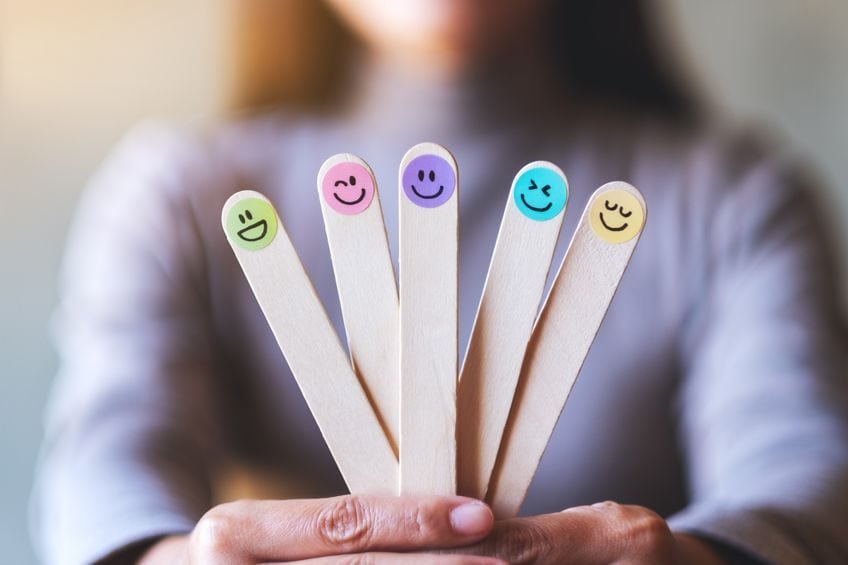
The Color Blue
When considering color psychology, blue is seen as something related to human intellect. Various shades of blue are all soothing, softer blues can calm the mind and so help improve concentration, while stronger shades of blue help to stimulate the mind. Blue is a color favored by many, but it is a favorite amongst men. The color is seen as trustworthy and confident.
However, blue can also have negative associations, for example, it can seem cold, distant, isolated, depressing, and predictable.
The Color Green
Green is another favorite color by many and is closely related to all things natural as well as associated with health, growth, prosperity, abundance, and balance. Green helps to connect all of the other primary colors and facilitates a certain balance or harmony. Green can be striking, but it does not overly intrude, which makes it quite a popular color. Green can also denote feelings of envy and can be related to stagnation, and boredom.
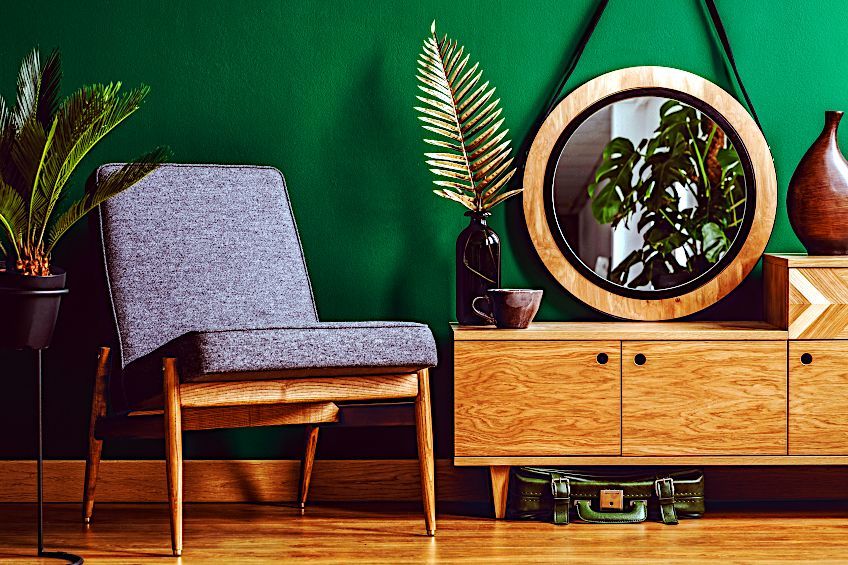
The Color Yellow
Bright, happy, and optimistic yellow, is a color that is associated with emotions. Yellow also inspires, energizes, can stimulate creativity, amuses, and provides warmth. However, it should be used carefully as it can also have adverse effects. For example, it can cause sadness and apprehension.
Yellow can also be seen as cowardly, egotistical, and deceiving.
The Color Red
Red has a long wavelength and is, therefore, considered a strong color that attracts attention, which is why it is used as a color for caution. For example, red traffic lights or other warning signs. The color is vibrant and easily seen and conveys a sense of urgency. Red is also associated with physical skills. Red is seen as warm, enthusiastic, and full of energy, strength, confidence, and passion. Negatively, it is associated with danger, anger, and aggression.

How Can You Mix Primary Colors to Create New Colors?
When you blend two primary paint colors, this creates secondary colors. Since you can get different paints and hues, and you might use different amounts, you can create different shades. For example, alizarin crimson or cadmium red medium will produce slightly different secondary colors.
When learning color theory, you will discover the color wheel, primary colors, secondary colors, intermediate, and tertiary colors. You also get warm and cool colors. Blues and greens are considered cool colors, while the reds, yellows, and orange colors are warm.
So, in the case of alizarin crimson, even though it is a red color, it is considered a cool red, which means it has more of a blue bias or undertone.
The cadmium red medium is a warm red, as it has more of a yellow bias. So, when mixing primary colors, this has to also be taken into consideration. When blending two warm colors, for example, cadmium red medium with cadmium yellow medium, it will produce a purer orange than if you mixed a warm red and cool yellow. Also, if you use, for example, the alizarin red, which is a cool red, and then blend it with the cadmium yellow medium, which is a warm yellow, you are including blue into the mixture. This means you have all three primary colors mixing, which can produce a muddy and less vibrant color than what you are expecting.
Are Primary Colors Pure?
Most of us have been taught that you get pure colors, which cannot be created by mixing any other colors, which is part of the primary colors definition. However, this is not all true because you can make red by blending two colors, specifically, magenta, and yellow. Blue can also be created by blending cyan and magenta. So, you have more of a wider range of color capabilities with the CMYK color model.
Theoretically, there are the traditional primary colors that we rely on to understand colors, and they do form an important basis for color theory, but as you can see, it is not something that is absolute and there are variations.

This happens even more when working with paints because there are no “pure” paint colors. As we have mentioned when mixing colors, if you take two primary colors, you will not necessarily get the color you expect. This is because most paint colors contain more than one pigment, and each manufacturer has a different formula for their paints. For example, many of the yellow paints, have either a red or green undertone. Red colors have a yellow undertone or a blue bias, and many blue paints have a red or yellow undertone.
All of this will affect the color you want to mix, so if you want to make a green, it should be simple to mix blue and yellow. However, the yellow you use might have a reddish undertone. This will mean you are mixing red, yellow, and blue which will give you a muddy brownish-green color. The point is to always take into consideration the paint undertones before you mix colors, otherwise, you will simply be creating a muddy disaster.
Working with colors, whether it is with painting or creating a website, the process can be more complicated and challenging than you first realize. This is why gaining a firm foundation in color theory and how colors work together is so important.
Frequently Asked Questions
How Many Primary Colors Are There?
This can be a trick question because most of us learned our primary colors and these add up to three, red, yellow, and blue. However, if you consider other color models, this widens the number a bit. For example, you also have the RGB and CMYK color models with different primary colors.
What Are Additive Colors?
The word additive explains it quite nicely, which means colors are added to make new colors. This is mostly used for light sources like web pages and television screens. The red, green, and blue light is blended in different ways to create the various hues. This deals with how the light is seen directly and is not reflected.
What Are Subtractive Colors?
Subtractive colors are used in the case of objects or real surfaces like a canvas or a piece of paper. So, this means it is used for painting and things like printing. Subtractive simply means that certain color wavelengths are emitted, and you are left with the color you can visibly observe and deals with the reflection of light.
Can You Mix All the Primary Colors?
When painting, mixing all the primary colors will give you something close to a muddy brown color. This is why you should take note that many of the red, yellow, and blue paints in a tube might have an undertone or color bias. This will ultimately affect the color outcome.
In 2005, Charlene completed her Wellness Diplomas in Therapeutic Aromatherapy and Reflexology from the International School of Reflexology and Meridian Therapy. She worked for a company offering corporate wellness programs for a couple of years, before opening up her own therapy practice. It was in 2015 that a friend, who was a digital marketer, asked her to join her company as a content creator, and this is where she found her excitement for writing.
Since joining the content writing world, she has gained a lot of experience over the years writing on a diverse selection of topics, from beauty, health, wellness, travel, and more. Due to various circumstances, she had to close her therapy practice and is now a full-time freelance writer. Being a creative person, she could not pass up the opportunity to contribute to the Art in Context team, where is was in her element, writing about a variety of art and craft topics. Contributing articles for over three years now, her knowledge in this area has grown, and she has gotten to explore her creativity and improve her research and writing skills.
Charlene Lewis has been working for artincontext.org since the relaunch in 2020. She is an experienced writer and mainly focuses on the topics of color theory, painting and drawing.
Learn more about Charlene Lewis and the Art in Context Team.
Cite this Article
Charlene, Lewis, “Primary Colors – What Are the Primary Colors in Color Theory?.” Art in Context. October 5, 2022. URL: https://artincontext.org/primary-colors/
Lewis, C. (2022, 5 October). Primary Colors – What Are the Primary Colors in Color Theory?. Art in Context. https://artincontext.org/primary-colors/
Lewis, Charlene. “Primary Colors – What Are the Primary Colors in Color Theory?.” Art in Context, October 5, 2022. https://artincontext.org/primary-colors/.





